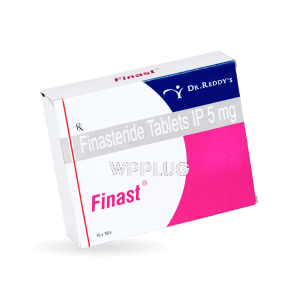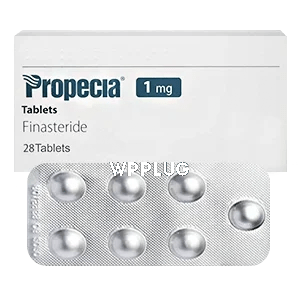
| Product dosage: 1mg | |||
|---|---|---|---|
| Package (num) | Per pill | Price | Buy |
| 20 | $2.01 | $40.20 (0%) | 🛒 Add to cart |
| 30 | $1.51 | $60.30 $45.23 (25%) | 🛒 Add to cart |
| 60 | $0.92 | $120.61 $55.28 (54%) | 🛒 Add to cart |
| 90 | $0.78 | $180.91 $70.35 (61%) | 🛒 Add to cart |
| 120 | $0.67 | $241.21 $80.40 (67%) | 🛒 Add to cart |
| 180 | $0.61 | $361.82 $110.55 (69%) | 🛒 Add to cart |
| 270 | $0.56 | $542.72 $150.76 (72%) | 🛒 Add to cart |
| 360 | $0.50
Best per pill | $723.63 $180.91 (75%) | 🛒 Add to cart |
Propecia: Clinically Proven Treatment for Male Pattern Hair Loss
Propecia, with the active ingredient finasteride, is a prescription medication specifically developed to treat male pattern hair loss (androgenetic alopecia) in men. It represents a significant advancement in dermatological and endocrine therapy, offering a targeted approach to a common condition with considerable psychological impact. By inhibiting the conversion of testosterone to dihydrotestosterone (DHT), the primary hormonal driver of follicular miniaturization, Propecia addresses the underlying pathophysiology of hair loss. Its efficacy and safety profile are supported by extensive clinical trials and decades of real-world use, establishing it as a first-line, evidence-based therapeutic option for suitable candidates.
Features
- Contains 1 mg of finasteride as the active pharmaceutical ingredient.
- Formulated as a film-coated, pentagon-shaped tablet for oral administration.
- Functions as a competitive and specific inhibitor of Type II 5α-reductase.
- Prescription-only medication, ensuring use under appropriate medical supervision.
- Manufactured under strict Good Manufacturing Practice (GMP) standards for consistent quality and potency.
Benefits
- Promotes visible hair regrowth in the vertex (crown) and mid-scalp areas of the scalp, as demonstrated in large-scale, placebo-controlled studies.
- Halts or significantly slows the progression of further hair loss by addressing the primary hormonal cause.
- Provides a non-surgical, convenient, and discrete treatment option integrated into a daily routine.
- Offers a high response rate, with the vast majority of men experiencing stabilization of their hair loss.
- Supported by a robust body of long-term clinical data confirming its sustained efficacy over multiple years.
- Can improve patient self-esteem and quality of life by positively altering the course of androgenetic alopecia.
Common use
Propecia is indicated for the treatment of male pattern hair loss (androgenetic alopecia) in men only. It is specifically designed for use in adult men experiencing hair loss at the vertex and anterior mid-scalp area. It is not indicated for use by women or children. Treatment is intended for long-term management, as cessation of therapy leads to a reversal of its beneficial effects within 12 months, with hair loss returning to pretreatment levels.
Dosage and direction
The recommended dosage is one 1 mg tablet administered orally once daily, with or without food. Adherence to a consistent daily dosing schedule is critical for achieving and maintaining optimal therapeutic results. Clinical improvement is typically not immediate; a minimum of three months of daily dosing is required before any effect can be observed, and it may take up to two years or longer to see the full benefit, based on individual response and hair growth cycles. The tablet should be swallowed whole with a glass of water.
Precautions
Prior to initiating treatment, a proper diagnosis of androgenetic alopecia must be confirmed by a healthcare professional. Patients should be informed that they must not donate blood while taking Propecia or for at least one month after discontinuing therapy to prevent administration of the drug to a pregnant female transfusion recipient. Due to the mechanism of action, women who are or may potentially be pregnant must not handle crushed or broken tablets because of the possibility of absorption and the subsequent potential risk of causing abnormalities of the external genitalia of a male fetus. Routine monitoring, including periodic follow-up with a prescribing physician, is advised to assess efficacy and review any concerns.
Contraindications
Propecia is contraindicated in the following populations:
- Women who are pregnant or who may become pregnant. Finasteride is a Pregnancy Category X drug and can cause abnormalities of the external genitalia in a male fetus.
- Pediatric patients.
- Patients with hypersensitivity to finasteride or any other component of the formulation.
- Patients with existing severe hepatic impairment, as the drug is extensively metabolized in the liver.
Possible side effects
Like all medications, Propecia can cause side effects, although not everybody gets them. The following adverse reactions are based on clinical trial data and post-marketing experience. It is crucial to discuss any persistent or bothersome side effects with a healthcare provider.
- Sexual Dysfunction: The most commonly reported side effects are related to sexual function and include decreased libido (1.8%), erectile dysfunction (1.3%), and ejaculation disorders (1.2%). These events typically resolve in men who discontinue therapy and resolve in some men who continue taking the drug.
- Reproductive System: Breast tenderness and enlargement (gynecomastia) have been reported.
- Hypersensitivity: Reactions such as rash, itching, hives, and swelling of the lips and face have been reported.
- Psychological: Depressive mood has been reported in post-marketing experience.
- Persistent Side Effects: There have been rare, post-marketing reports of sexual dysfunction (e.g., erectile dysfunction, ejaculatory disorders, decreased libido) that continued after discontinuation of the drug. The causal relationship, mechanisms, and incidence of these events are not yet fully understood.
Drug interaction
Formal drug interaction studies have been conducted. However, due to finasteride’s extensive metabolism via the CYP3A4 enzyme system, caution is advised when co-administering Propecia with potent inhibitors of this enzyme (e.g., ketoconazole, itraconazole, ritonavir). While no clinically significant interactions have been identified with drugs like warfarin, digoxin, or theophylline, patients should always inform their doctor of all medications they are taking, including prescription, over-the-counter, and herbal products.
Missed dose
If a dose is missed, it should be skipped, and the regular dosing schedule should be resumed the next day. Do not take a double dose to make up for a missed one. Maintaining a consistent daily routine, such as taking the tablet at the same time each day, can help prevent missed doses.
Overdose
In the event of a known or suspected overdose, medical attention should be sought immediately. Single doses of finasteride up to 400 mg and multiple doses up to 80 mg/day for three months have been administered without significant adverse effects. Overdose would not be expected to present with specific symptoms, but general supportive measures should be instituted. As the drug is highly protein-bound, it is not expected to be significantly dialyzable.
Storage
Store Propecia tablets at room temperature between 15°C and 30°C (59°F and 86°F). Keep the medication in its original blister pack or bottle to protect it from light and moisture. Always keep all medications out of the reach of children and pets. Do not use after the expiration date printed on the packaging.
Disclaimer
This information is for educational purposes only and does not constitute medical advice. It is not a substitute for a consultation with a qualified healthcare professional. The prescribing physician is the ultimate source of information regarding a patient’s treatment regimen. Always read the accompanying patient information leaflet provided with your medication and follow your doctor’s instructions precisely. Do not start, stop, or change the dosage of any medicine before checking with your doctor.
Reviews
- “As a dermatologist with over twenty years of practice, I have prescribed finasteride to hundreds of patients. For the vast majority, it is a game-changer. It effectively halts progression and, in many cases, provides cosmetically significant regrowth. Managing patient expectations regarding the timeline for results and the potential for side effects is a critical part of the consultation.” – Dr. Evan R., MD, Dermatology
- “After a year on Propecia, my hair loss has completely stabilized. I wish I had started sooner. The peace of mind is invaluable. I experienced no side effects.” – Mark T.
- “The clinical data for finasteride 1mg is undeniable. It remains one of the few FDA-approved medications with Level 1 evidence for the treatment of male pattern hair loss. Its targeted mechanism provides a rational, rather than cosmetic, approach to treatment.” – Clinical Pharmacist Review
- “I noticed a slight decrease in libido during the first two months, but it subsided. For me, the benefit of keeping my hair far outweighed this temporary issue.” – James L.
- “This medication requires patience. I didn’t see any change for the first six months and was ready to quit. My doctor encouraged me to continue, and I’m glad I did. By month 9, there was visible thickening.” – Robert K.



